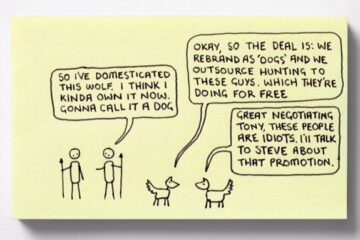One of the things I’ve tested is price points.
My tests have indicated that price points of 7 and 9 tend to underperform price points of 5 and 0 – often by over 30%.
So, for example, £75 or £80 would usually be “good” prices compared to £77 and £79. (Good = more sales.)
However, there are experts in America who claim 9s are best.
The evidence they cite is a 2003 study by University of Chicago and MIT titled, “Effects of $9 Price Endings on Retail Sales: Evidence from Field Experiments”.
This experiment took four products priced $39, $49, $59, $79.
They tested what would happen if they increased and decreased the prices by $5. So, for the $39 item, they tested $34 and $44, and so on.
The results:
| Item | Price | Sales | Price | Sales | Price | Sales |
|
1 |
$39 |
21 |
$44 |
17 |
$34 |
16 |
|
2 |
$49 |
14 |
$44 |
8 |
$54 |
10 |
|
3 |
$59 |
7 |
$54 |
7 |
$64 |
6 |
|
4 |
$79 |
24 |
$84 |
12 |
$74 |
15 |
Two Things To Take From This
If you tally the sales, you get:
The mid prices (the 9s) produced 66 sales for a total of $3814.
The low prices produced 46 sales for a total of $2384, an average of $51.83.
The high prices produced 45 sales for a total of $2680, an average of $59.56.
So the highest prices produced just one sale less (2.2%) than the lowest prices, but brought in 12.4% more money.
That means increasing the price by 14.9% had almost zero effect on the number of sales… it’s practically “free money”.
Why is that? I’d be inclined to suggest that, for the most part, for the customer, the difference between buying and not buying is rarely 10%.
But for the vendor, a 10% higher price could – depending on margins and advertising costs – easily produce 30%-60% more profit.
And that may be true for your business. In which case, it would be the easiest profit boost you could give yourself.
Price Point Conclusions
Moving on to what the test was trying to prove – which was whether “$9 price endings increase demand” – I’m not convinced.
Clearly 9 did better than 4 and I agree the conclusion should be that 9 is probably a better price point than 4. (Though, of course, this is very limited data.)
But I’d be more inclined to conclude that 4 is a particularly poor price point. What would be far more interesting would be a comparison with 5, 7 and 0.
And, until I see a well-designed test that shows 9s to be better than 5 and 0, I’m going to stick to using those price points.
Best wishes,
Steve Gibson



